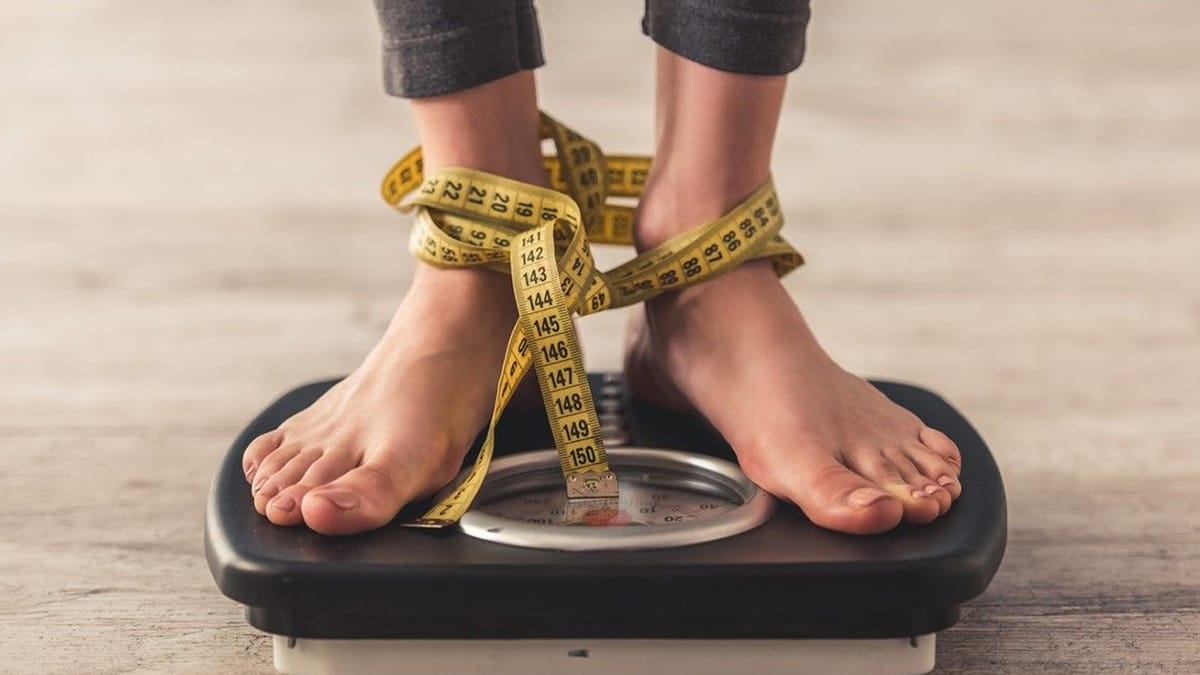8 Proven Exercises to Boost Weight Loss Results
If you’ve been struggling to lose weight despite dieting or doing random workouts, you’re not alone. Research confirms that specific exercises can dramatically speed up fat loss when performed consistently with proper technique. Below are eight proven exercises that ignite your metabolism, burn calories efficiently, and help reshape your body faster than you ever imagined.

1. High-Intensity Interval Training (HIIT)
HIIT is one of the most effective workouts for rapid fat burning. This method alternates short bursts of intense activity with brief rest periods, pushing your body to its metabolic limit.
Why it works:
Studies published in the Journal of Obesity show that just 20 minutes of HIIT can burn more calories than an hour of moderate jogging. HIIT triggers the afterburn effect (EPOC), which means your body continues burning fat long after you’ve finished working out.
Example routine:
30 seconds sprint, 30 seconds rest (repeat 10 rounds)
Add jumping jacks, burpees, and mountain climbers for variation
Tip:
If you’re new to HIIT, start twice a week and gradually increase to four sessions as your stamina improves.
2. Jump Rope (Skipping)
Simple yet powerful, jumping rope can torch calories while improving coordination and cardiovascular health.
Calorie burn:
A 155-pound person can burn around 350–450 calories in just 30 minutes of jump rope according to Harvard Health Publishing.
Why it’s effective:
Skipping engages multiple muscle groups — calves, shoulders, core, and legs — turning it into a full-body fat-burner. It also boosts agility and endurance, essential for long-term weight management.
Beginner tip:
Start with 1-minute intervals, rest for 30 seconds, and repeat for 15–20 minutes.
3. Strength Training
Building muscle is one of the most underrated keys to fat loss. The more lean muscle you have, the more calories your body burns even at rest.
Scientific insight:
According to a study by The American Journal of Clinical Nutrition, individuals who performed strength training three times a week increased their resting metabolic rate by up to 8%.
Best compound exercises:
Squats
Deadlifts
Push-ups
Pull-ups
Bonus:
Strength training improves bone density, posture, and confidence — vital benefits often overlooked in traditional cardio routines.
4. Running (Outdoor or Treadmill)
Running remains one of the oldest yet most effective fat-burning exercises. It boosts cardiovascular health while rapidly depleting glycogen stores, forcing your body to burn stored fat for energy.
Fat loss advantage:
Moderate-intensity running (30–45 minutes) can burn 400–600 calories depending on pace and body weight.
Pro tip:
Alternate between steady-state runs and sprint intervals for faster results. Trail running adds more resistance and improves leg strength too.
5. Cycling
Whether on a stationary bike or outdoors, cycling is an exceptional low-impact way to shed fat while strengthening the lower body.
Why it’s great for weight loss:
Cycling engages the glutes, hamstrings, quads, and calves — all large muscle groups that enhance metabolic rate.
Calorie data:
You can burn 500–700 calories per hour depending on intensity.
Motivational insight:
Cycling is also easier on the joints, making it ideal for overweight individuals or beginners who can’t handle high-impact exercises yet.
6. Swimming
Swimming combines cardio and resistance training in one activity. Every movement in water challenges your muscles, increasing calorie expenditure significantly.
According to research by the Mayo Clinic:
Swimming can burn up to 800 calories per hour depending on stroke and intensity.
Best for:
People with joint pain, arthritis, or recovering from injury. It’s gentle yet incredibly effective for fat loss.
Bonus tip:
Try interval laps — 2 fast laps, 1 recovery lap — to maximize fat burn.
7. Walking (Power Walking or Incline Walking)
Don’t underestimate walking. Consistent brisk walking can produce significant results over time, especially for beginners.
Why it’s effective:
Walking boosts fat oxidation and improves insulin sensitivity, which helps regulate fat storage.
Data insight:
A 45-minute brisk walk can burn up to 300 calories while reducing stress hormones like cortisol that contribute to belly fat.
Pro tip:
Add incline walking (5–10%) on a treadmill for greater calorie burn and lower-body toning.
8. Core & Functional Training
Your core muscles (abs, lower back, hips) play a central role in stabilizing your entire body and supporting efficient fat-burning movement.
Effective exercises:
Plank variations
Russian twists
Bicycle crunches
Mountain climbers
Added benefit:
A strong core improves posture, reduces injury risk, and enhances performance in all other workouts mentioned above.
Optimize Your Weight Loss Journey with Smart Habits
You can perform all eight of the best fat-burning exercises, but if your lifestyle doesn’t align with your goals, the results may come slowly. Sustainable weight loss requires synergy between exercise, nutrition, recovery, and mindset.
Let’s dive into the key optimization habits that amplify your fat-burning workouts.
1. Balance Exercise with Proper Nutrition
Your body is like an engine — the better the fuel, the smoother the performance.
To maximize fat burning, aim for a calorie deficit while keeping your meals rich in nutrients.
Science-backed principle:
A study from the National Institute of Health reveals that individuals who combine strength and cardio workouts with a balanced diet lose up to 40% more fat compared to those who only focus on diet or exercise alone.
Nutrition rules to follow:
Prioritize lean protein (chicken breast, fish, eggs, tofu) to maintain muscle mass
Include fiber-rich carbs (brown rice, quinoa, oats) for energy and digestion
Use healthy fats (avocado, olive oil, nuts) to support metabolism and hormone balance
Stay hydrated: 2–3 liters of water daily accelerates fat metabolism
2. Prioritize Sleep and Recovery
Many people underestimate the power of sleep. Lack of rest increases the hormone ghrelin (hunger) and reduces leptin (satiety), causing overeating and poor recovery.
Pro insight:
According to Sleep Foundation, adults who sleep less than 6 hours per night are 55% more likely to gain weight.
Action step:
Sleep at least 7–8 hours per night
Include 1–2 rest days weekly to allow muscle repair
Try light yoga or stretching on rest days to keep your body flexible
3. Stay Consistent and Track Your Progress
Weight loss isn’t linear. You might drop pounds quickly one week and plateau the next.
Tracking helps you stay accountable and motivated.
Smart tracking tips:
Record your workouts and body measurements weekly
Use apps or a journal to log meals and progress
Take progress photos every 2 weeks — visual change builds motivation
Consistency beats perfection. Even small daily efforts compound into major transformations over months.
4. Combine Cardio and Strength Training
Cardio burns calories fast, while strength training boosts metabolism long-term. When you combine both, the results multiply.
Recommended weekly split:
3 days cardio (HIIT or running)
3 days strength or resistance training
1 day active recovery (stretching or walking)
This balance ensures you burn fat efficiently without losing muscle tone.
5. Maintain a Positive Mindset
Weight loss is not just physical; it’s psychological. Your mindset determines whether you stay disciplined or give up early.
Mental tips for success:
Focus on progress, not perfection
Celebrate small wins — consistency itself is a victory
Avoid comparing your journey with others
Use affirmations: “Every workout brings me closer to my best body.”
Your mind drives your motivation. Once your mindset aligns, your body will follow.
Frequently Asked Questions (FAQ)
1. How long before I start seeing results from these exercises?
Most people notice changes within 3–4 weeks of consistent training and proper diet. Visible fat reduction usually appears around week 6–8 depending on intensity and metabolism.
2. Should I do all eight exercises every day?
No, mix them up throughout the week. Overtraining can cause fatigue and injury. A balanced routine of 5–6 workout days with one rest day is ideal.
3. Can beginners follow these exercises safely?
Yes, start with low intensity and focus on proper form. Gradually increase reps or duration as your endurance improves.
4. What is the best time of day to work out for weight loss?
Morning workouts may slightly enhance fat oxidation, but the best time is whenever you can stay consistent. Consistency matters more than timing.
5. Do I need equipment for these workouts?
Most can be done with body weight. However, using simple gear like resistance bands, dumbbells, or a jump rope can accelerate progress.
6. What are common mistakes people make during fat-loss workouts?
Skipping warm-ups, neglecting recovery, eating too little, or doing only cardio without strength training. Balance is key.
7. Are supplements necessary for weight loss?
Not mandatory, but certain ones can help — like protein powder, omega-3, and electrolytes — if your diet lacks those nutrients.
Recommended Fitness Tools and Accessories (Non-branded)
If you’re serious about consistent progress, these simple tools can help:
Adjustable Dumbbells
Yoga Mat for floor exercises
Resistance Bands Set
Jump Rope (Weighted or Speed type)
Foam Roller for muscle recovery
These items enhance training variety, safety, and motivation without needing a gym membership.
5 Essential Tips to Avoid Weight Loss Pitfalls
Don’t starve yourself. Under-eating slows metabolism and causes muscle loss.
Avoid workout burnout. Listen to your body and rest when necessary.
Stay away from quick-fix diets. Focus on long-term sustainability.
Keep your hydration up. Dehydration can mimic hunger and reduce energy.
Track your sleep quality. Poor sleep equals poor fat metabolism.
Final Thoughts: Your Blueprint for Faster Fat Loss
These 8 proven exercises offer more than just physical change — they transform your confidence, energy, and overall lifestyle.
Here are the 7 key takeaways to keep you on track:
Mix cardio and strength training for the ultimate fat-burning combo
Fuel your body with balanced nutrition — food is your energy
Rest and recover so your muscles can grow and burn fat efficiently
Stay consistent, even when progress feels slow
Hydrate and manage stress — both affect fat storage
Measure progress, not perfection
Never quit — transformation is built through persistence, not intensity
Remember, real results don’t happen overnight. But if you stick to these workouts and lifestyle principles, your fat loss will be not just fast but lasting.
Reference & Additional Reading
Inspired by studies and insights from:
www.health.harvard.edu
www.menshealth.com
www.healthline.com
www.womenshealthmag.com
www.ncbi.nlm.nih.gov
www.webmd.com
www.medlineplus.gov
www.tridenttech.edu
www.burnexia.com

